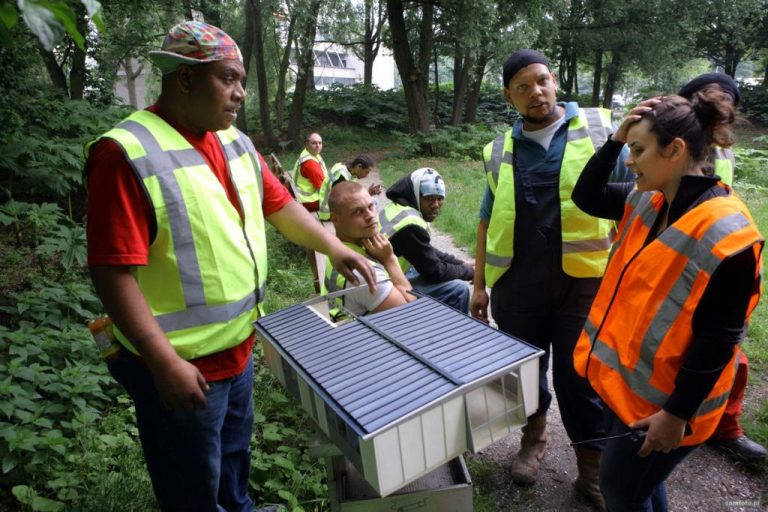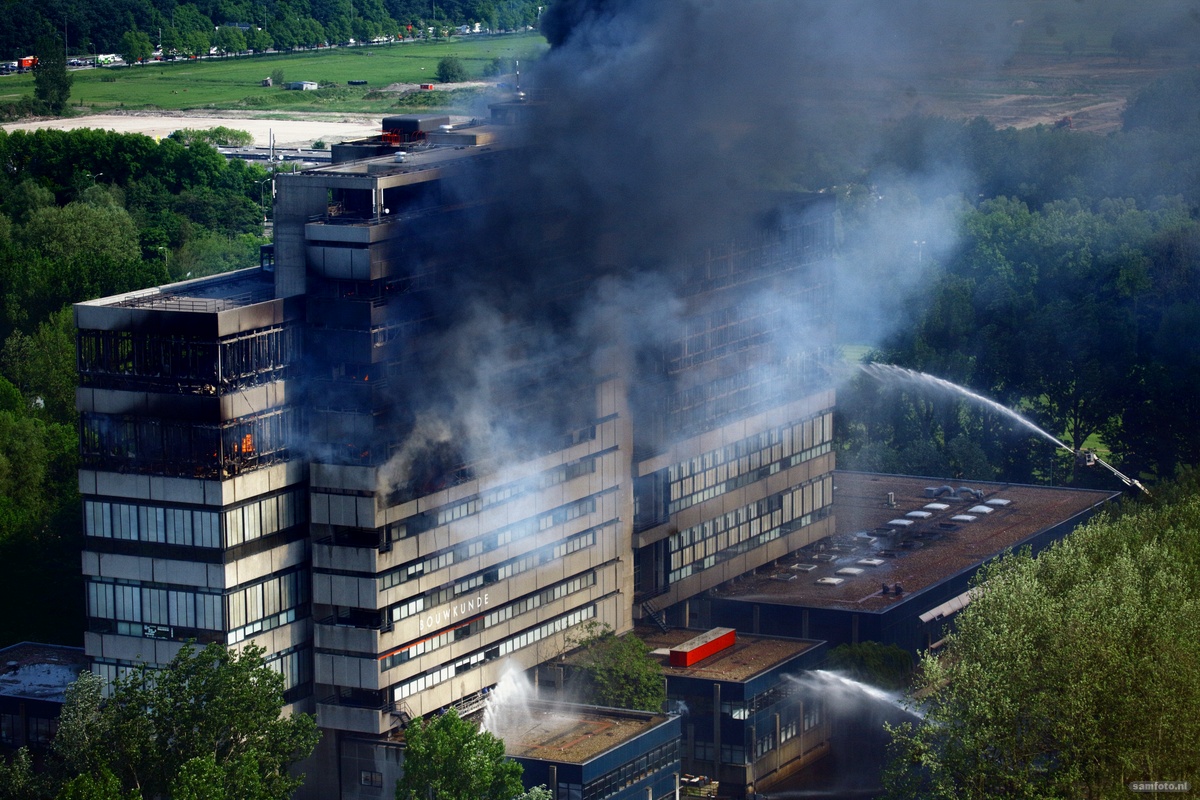Thousands of Architecture and the Built Environment students and staff members lost their building to a fire 15 years ago. Delta lists five frequently asked questions.
The building had to be demolished after the fire. (Photo: Sam Rentmeester)
1. I do not know much about the fire. Can you tell me more about it?
Yes, of course. Up to 2008 the Faculty of Architecture and the Built Environment was housed in a completely different building. It was a concrete giant that was almost as high as EEMCS and was in the middle of the campus where the Green Village is now. On Tuesday, 13 May 2008 the Faculty caught fire. Not only did thousands of people lose their place of work, but students, PhD candidates, and professors lost part of their research.
On the day of the disaster, an Architecture and the Built Environment staff member came across a leak early in the morning. A water pipe had burst on the seventh floor. At around 08:15, a student at the coffee machine on the sixth floor heard a strange continuous sound. Over 45 minutes later a melted piece of plastic fell out of the coffee machine, setting it alight. While two student emergency responders did their best to put out the fire, the flames would not be doused. “They talked about fireballs shooting from the machine,” said one of the emergency responders, Linda van Keeken, looking back in a Delta podcast. She arrived at about 09:16, soon after the fire in the coffee machine could not be put out, to check the situation. She decided to evacuate the building. Everyone left the building in one piece. One hundred and eighty-five firefighters tackled the fire, but they came up against all sorts of problems. The water pressure was extremely low as the water had been turned off because of the leak. “Little more than a stream of piss came out of the hose,” remembers fireman Rob Righards, “And such a thin one that you couldn’t even water your garden with it.” The building collapsed at the end of the afternoon and a week later the demolition work started.
2. Did students experience study delays?
This was different for each student. While students were permitted to graduate under different criteria for a while after the fire, they did face various problems such as the books at Architecture and the Built Environment not being available for borrowing for a month and the loss of a lot of maquettes. The story of one of the students, Laura van Kappel, shows how hard a loss like this can be. She graduated cum laude, but was in tears during her final presentation as she did not have her maquette. It was later found during a salvage operation. The fire also affected new students. Hundreds of internationals who had submitted their portfolios to do an Architecture and the Built Environment master’s had to resend their documents.
 Some models were saved in the days after the fire. (Photo: Sam Rentmeester)
Some models were saved in the days after the fire. (Photo: Sam Rentmeester)
3. And what about researchers?
Many professors lost their personal archives. One of them was Emeritus Professor Franziska Bollerey who lost ‘many metres’ in the fire. Other professors suffered losses too. More than four months after the disaster, Professor Machiel van Dorst told (in Dutch) Delta how he lost his personal book collection, graduation reports, lecture materials, and academic publications.
Just like the professors, PhD candidates faced many difficulties too. Philip Koppels, a doctoral candidate lost data and literature notes. He believes that he incurred a delay of about nine months. Marjolein van Esch, then a doctoral candidate, lost (in Dutch) a year’s worth of research. Of the 189 PhD candidates, 84 faced delays. For 39 of them, the delays lasted up to three months. Twenty-eight PhD candidates faced delays of three to six months, 16 faced 12 month delays, and one doctoral candidate even had a delay of two years.
- Read Franziska Bollerey’s story here. She still experiences the effects of the loss of her historic documents today.
4. Were some things saved?
You have already read that Laura van Kappel’s maquette was salvaged. The week after the fire saw several salvage operations. One was to save important historic books, one was to empty the print cabinet, and another was to save historic cards. The famous chair collection also survived the fire and a bust purportedly to be that of M.J. Grandpré Molière was found among the rubble in the Faculty. That statue – with fire damage – is now on display at the Architecture and the Built Environment library.
- Read the story of Marcel Janssen and Hans Kaiser who saved various sixteenth, seventeenth and eighteenth century books from the Architecture and the Built Environment building.
5. What happened after the fire?
After the disaster, TU Delft set up large tents on the sports fields opposite the X sports and culture centre with workplaces and teaching spaces. Two were for students and two for staff members. Some staff members were also housed at other faculties.
The then Minister of Education Plasterk called the fire ‘the biggest disaster in university history’. He gave a subsidy worth EUR 25 million for a new building. Plasterk attempted to have the subsidy for a new building returned, but after the intervention of the court, TU Delft was permitted to keep the millions. In the end, Architecture and the Built Environment moved to an existing historic building where the Faculty had originally seen the light of day. This building has remained the home of Architecture and the Built Environment students and staff members up to today.
Do you have a question or comment about this article?
a.m.debruijn@tudelft.nl


Comments are closed.